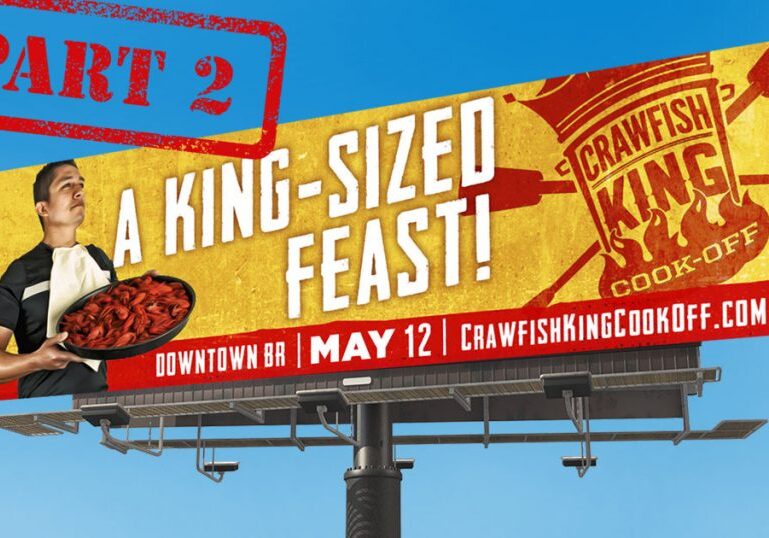From the FC Newsroom
October 18, 2017
The Power of Outdoor Advertising, Part 2

A couple of weeks ago, I wrote about one of my favorite advertising channels … outdoor billboards. No other medium forces you to boil down your selling point to its bare essence. I also brought up the importance of maximizing the media spend on outdoor advertising by having a professional handle the messaging and design. Well, a fellow ad professional in Orlando, Justice Mitchell, replied to the post with five excellent questions that I was anxious to answer. So, let’s get started…
What do you think the best way to assess the effectiveness of outdoor is?
Outdoor can be a tough medium to assess. It’s often a support medium that helps drive frequency and awareness for the overall campaign. Think of the drummer in a band, who’s not the lead performer, but essential to driving the beat of the song. Outdoor advertising does that for a campaign. If you need your target audience to call or visit a website, I might not recommend outdoor as phone numbers and URLs are difficult to read and remember while driving. But, if you want your brand to be top of mind with your target, the frequency of outdoor could help you get there.
Do you feel outdoor is more suited for a brand impression campaign, or specific event/CTA?
I touched on this in the response above. Most of the time, we use outdoor advertising to drive brand impressions. But, thanks to the emergence of digital billboards, I’ve also seen outdoor be very effective in promoting events. Case in point: a campaign we produced for the Louisiana Department of Revenue (LDR). They ran a month-long tax amnesty campaign in 2013, 2014 and 2015 that encouraged people who were delinquent on their taxes to visit the LDR website and pay them. Ten days before the deadline, we began a “countdown” effort to heighten the sense of urgency. It was effective and helped each year’s campaign exceed its collection goal.
Click here to check out the LDR campaign case history.
When selecting a location for your signage, what factors do you take into account? Drive time? Demographic? Location? What else?
We start with the demographic of our target audience and go from there. Billboards on the main thoroughfares can be very pricey, so we often have to dig deeper and find boards in second tier locations that will still deliver a large portion of our audience. To do that, we need to know our audience well. That way, we can map out where in the city they likely live, where they likely work and then map out their likely route. Another consideration is the actual location of the board on the road. Is it on the right side of the road (right-hand read; easier to read) or on the left side (left-hand read; harder to read)? Given a choice, we always prefer right-hand reads.
Taking design into consideration, do you minimize your messaging based upon the speed at which your traffic may pass? Such as more contextual granularity on areas prone to have traffic back-ups?
There are best practices for outdoor advertising that we follow to maximize effectiveness. The main one applies to number of words in the headline … five to seven is optimal. We also look to use bolder fonts that are more easily read from a distance. We’ve even been known to thicken logo fonts that are naturally thin to make the company name easier to read. One trick for testing legibility is to print out the billboard on an 11×17 piece of paper, tape it to the wall, then step back about 10 feet and look at it.
Another design consideration is if the billboard is a right-hand read or left-hand read. We generally like to put the headlines on the side closest to the road. Also, having contrasting colors is important … especially for digital billboards.
Lastly, how long do you think a specific message should be on a board before it reaches a terminal visual saturation and drivers simply don’t see it?
A general rule of thumb is three months, then we might rotate the creative among our other locations. Speaking of “other locations,” I do like to settle on the locations that best reach our audience and then stay there for at least six months. Drivers get used to seeing your message there. Consistency and frequency are key to cutting through the clutter.
Final thoughts.
There are so many variables when it comes to creating advertising that is effective. While this blog post and the original one on Sept. 14 provides some of the best practices that we follow when it comes to outdoor advertising, your company’s or organization’s challenges are unique and should be treated as such.
If you have any questions or would like to improve the ROI of your company’s ad spend, feel free to email me at stuart@feigleycommunications.com for a “complimentary, no obligation, I’ll cover the coffee” meeting.